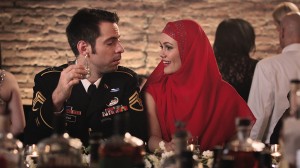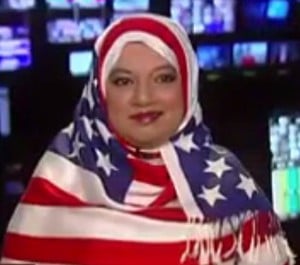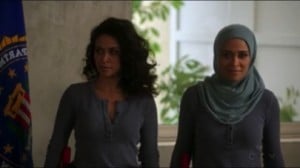The issue of stereotyping Muslims has been controversial throughout Hollywood’s history, and looking at American films and TV in general, we can see that Muslim men (usually represented as dark skinned, bearded, and speaking broken English) have almost invariably placed the “bad people category.” Nick Recktenwald, from The Mic comments on this here:
In general, Muslims in Hollywood cinema exist as one-dimensional characters: ignorant menaces hell-bent on kidnapping or killing as many Westerners in service of their exotic, violent god. Edward Said famously coined the term “Orientalism” to describe the cultural practice of transforming those from eastern cultures — both Asian and Middle Eastern — into the Other. Orientalism in film presents exotic characters created from a Western political and social bias to simultaneously elicit a strong reaction against Eastern culture while reaffirming American and European values.
When it comes to Muslim women, Hollywood has tended to portray them as belly dancers, or silent women covered in veils. As one writer on the Arab Stereotypes website puts it:
Veiled women and belly dancers are two sides of the same coin. On the one hand, belly dancers code Arab culture as exotic and sexually available. Portrayals of Arab women as sexually available position them as existing for male pleasure. On the other hand, the veil has figured both as a site of intrigue and as the ultimate symbol of oppression. As a site of intrigue, the veil has been represented as a forbidden zone that invites male penetration.”
I recently watched the film “Amira and Sam” (2014), directed by writer and first time director Sean Mullin about a veteran who falls in love with an Iraqi immigrant. They meet through Amira’s uncle, who met Sam during his service in Iraq, and after they go out together more than one time, a love sparkle forms between the two, and they fight for their love against all those opposing it.
There seems to be nothing wrong with this story, it is just a love story between two young people in America; this might sound like a typical “star-crossed lovers” romance for a lot of us. But the way Amira was represented in the film and her actions is what causes the problem for the film.
Throughout the film, which is 90 minutes, Amira seems to be so in love with her “Hijab” that she barely takes it off, even when she sleeps. We see Amira without a Hijab on three occasions: sitting one morning with her uncle, when the police come and get her, and when Sam takes it off for her before they supposedly make love.
Not only does she not take off her head scarf, but she also wears it with some provocative clothes. For example, at the beginning of the film, we see Amira selling DVDs in the street wearing a hijab while her cleavage is showing. On another occasion, when she goes with Sam to an engagement party, she wears a red dress that reveals her breasts, and part of her legs. I was watching the film with some friends, and some of them said: “What is the use of that thing she is putting on her head?,” in reference to the head scarf
In this film, Hijab is not used as a symbol of covering; it was rather employed as a sexual attraction tool. For example, at the engagement party when Amira was wearing her red dress, she looked like a Harem girl,” which is linked in a way to the sexual portrayal of women. So again, Hollywood is falling in the same trap, but this time, it’s being “creative” in the way Muslim girls in the modern age are presented.
It’s obviously clear that the film writer and director did not spend any effort researching the idea of Hijab, and why Muslim women cover. I believe it’s time that Hollywood starts using the efforts of experts in Islam and the Arab world to produce arts that are respectful to everyone, not only to Muslims. America has seen a lot of Muslims who excelled in their lives, and helped build successful careers and communities, but unfortunately, they are hardly ever mentioned or portrayed. Probably that is because their stories and glamour “do not sell.” At the end of the day, there needs to be some balance between the two ideas; promoting a film and being fair to ethnic groups portrayed in it.













